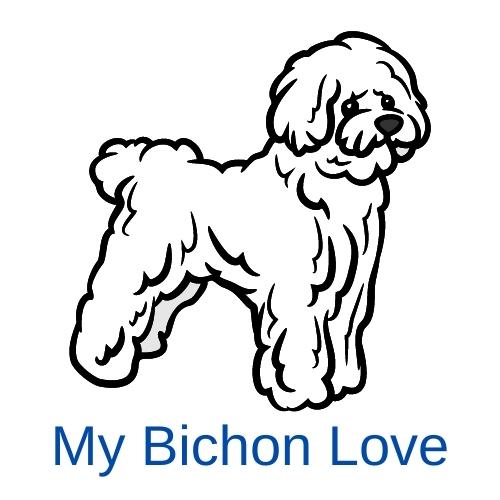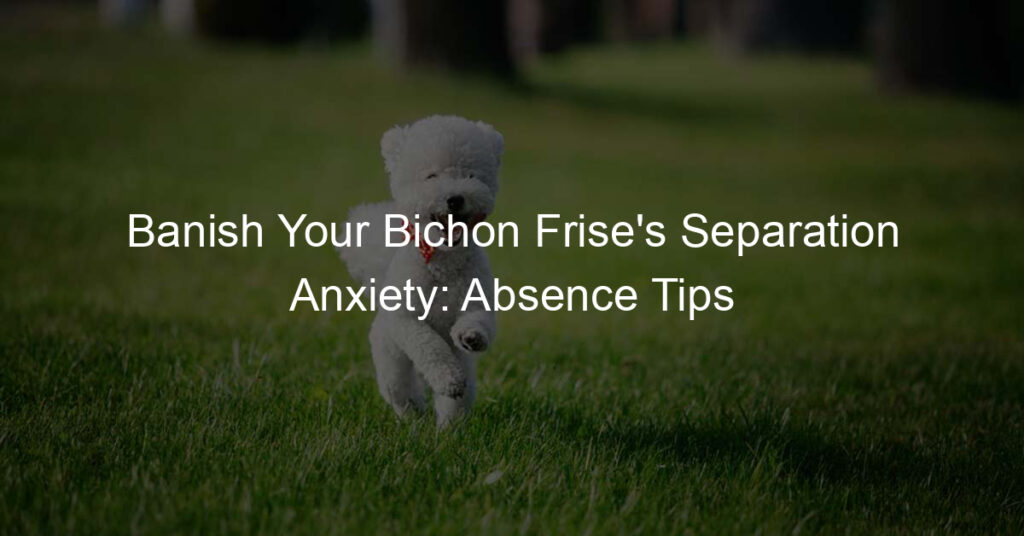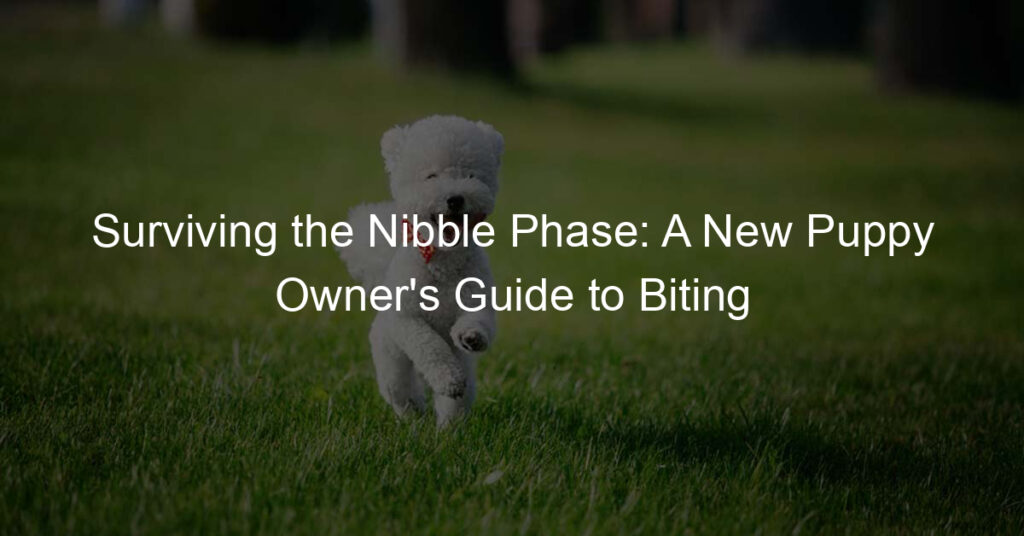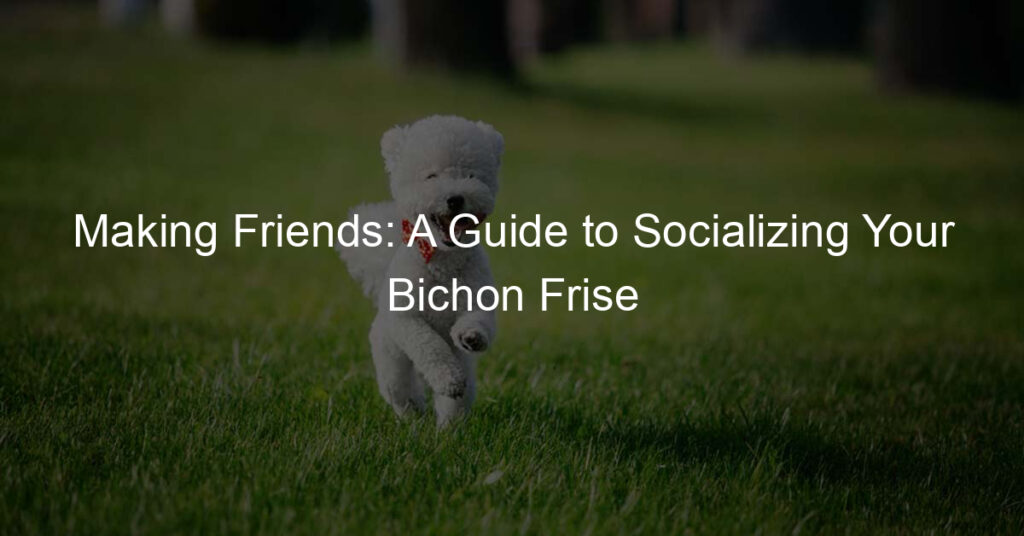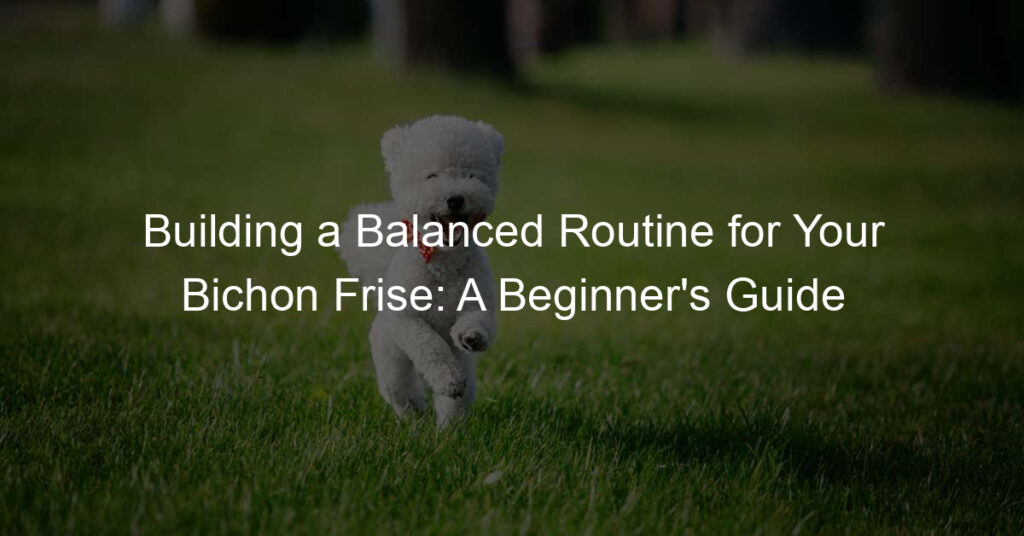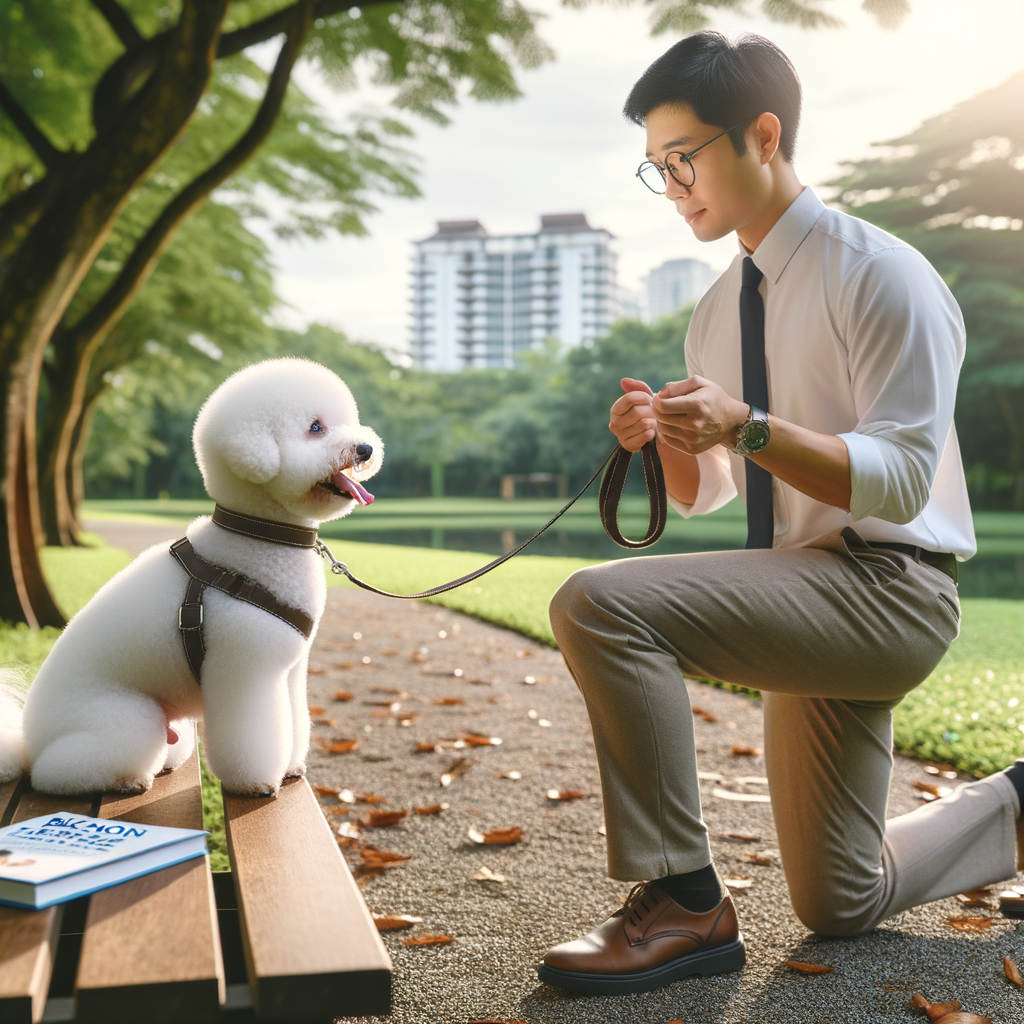
Introduction to Bichon Frise Leash Training
Training your Bichon Frise to walk on a leash can be a fun and rewarding experience for both you and your furry friend. However, it’s important to understand the unique characteristics of this breed and the importance of leash training. Let’s take a closer look at these aspects.
- Understanding the importance of leash training
Leash training is not just about teaching your Bichon Frise to walk beside you without pulling. It’s about building a strong bond with your pet and ensuring their safety. When your Bichon Frise is properly leash trained, you can confidently take them for walks in various environments, knowing they won’t run off or get into dangerous situations. It also helps in maintaining control and preventing behavioral issues.
- The unique characteristics of Bichon Frise that affect leash training
Bichon Frises are known for their friendly and outgoing nature. They are also quite intelligent, which makes them quick learners. However, they can be stubborn at times, which can pose a challenge during leash training. Their small size also means they can be easily injured if the leash is yanked or pulled too hard. Therefore, it’s important to approach leash training with patience and consistency, using positive reinforcement techniques.
Understanding these unique characteristics will help you tailor your leash training approach to suit your Bichon Frise’s needs, making the process more effective and enjoyable for both of you.
Leash Training Tips for Bichon Frise
Leash training your Bichon Frise is an essential part of their development and safety. One of the first steps in this process is choosing the right leash and collar. This decision can significantly impact your dog’s comfort and your control during walks.
Choosing the Right Leash and Collar
When selecting a leash and collar for your Bichon Frise, there are several factors to consider. Let’s delve into these aspects and also look at some recommended options for this breed.
- Factors to consider when buying a leash and collar
Firstly, you need to consider the size of your Bichon Frise. This breed is small, so a lightweight and adjustable collar would be most suitable. The leash should be sturdy yet not too heavy. It should also be long enough to allow your dog some freedom, but not so long that you lose control.
Secondly, consider the material of the leash and collar. Nylon or leather are good choices as they are durable and can withstand the playful nature of a Bichon Frise. Avoid materials that can easily break or cause discomfort to your dog.
Lastly, consider the design and features of the leash and collar. Some collars come with reflective materials for visibility during night walks. Some leashes have dual handles for better control. Choose one that best suits your walking routine and environment.
- Recommended leash and collar for Bichon Frise
A recommended collar for Bichon Frise is the ‘Adjustable Comfort Soft Dog Collar’. It is lightweight, comfortable, and comes in various sizes. For leashes, the ‘Nylon Dog Leash’ is a great choice. It is durable, has a comfortable grip, and comes with a reflective design for night walks.
Remember, the right leash and collar can make a significant difference in your Bichon Frise’s leash training experience. It can enhance their comfort and your control, making walks more enjoyable for both of you.
Introducing the Leash and Collar
Introducing a leash and collar to your Bichon Frise can be a crucial step in leash training. Here’s a step-by-step guide and some tips on how to handle any initial resistance your pup might show.
- Step-by-step guide to introducing the leash and collar
Firstly, let your Bichon Frise sniff and explore the leash and collar. This allows them to get used to the new objects. Next, put the collar on your dog without attaching the leash. Let them wear it around the house to get comfortable. Once your dog seems comfortable with the collar, attach the leash. Let them drag it around under your supervision. This helps them get used to the weight and feel of the leash. Finally, hold the other end of the leash and start walking around with your dog inside the house. Remember to reward your dog with treats and praises for their cooperation.
- How to handle initial resistance
It’s normal for your Bichon Frise to resist the leash and collar initially. Don’t worry, with patience and positive reinforcement, they will soon get used to it. If your dog shows resistance, don’t pull on the leash or force them to move. Instead, encourage them with treats or their favorite toy. If they continue to resist, take a break and try again later. Remember, the key is to make the experience positive for your dog.
In conclusion, introducing a leash and collar to your Bichon Frise can be a smooth process if done with patience and positive reinforcement. Remember, every dog is unique and may take their own time to get used to the leash and collar. So, don’t rush the process and always keep it positive.
Training Bichon Frise for Walks
Training your Bichon Frise for walks can be a rewarding experience for both you and your furry friend. With the right approach and techniques, you can ensure that your walks are smooth and enjoyable.
Teaching Basic Commands
Before you start walking your Bichon Frise, it’s important to teach them some basic commands. These commands will help you maintain control during your walks and ensure your dog’s safety.
- Essential commands for smooth walks
There are several commands that are essential for smooth walks. These include “sit”, “stay”, “heel”, and “come”. “Sit” and “stay” can help you control your dog when you need to stop, while “heel” can help keep your dog by your side during the walk. The “come” command is important for calling your dog back to you if they wander off.
- Training techniques for each command
Each command requires a different training technique. For “sit”, you can use a treat to lure your dog into a sitting position, then say “sit” and give them the treat when they do. For “stay”, you can start by having your dog sit, then step back and say “stay”. If your dog remains in place, reward them with a treat. “Heel” can be taught by walking with your dog on a leash and saying “heel” when they are by your side. Reward them with a treat when they follow correctly. Lastly, “come” can be taught by calling your dog’s name and saying “come”. Reward them when they come to you.
Remember, consistency and patience are key when training your Bichon Frise. It may take time, but with practice, your dog will learn these commands and your walks will become much smoother and more enjoyable.
Now that you know the essential commands and training techniques, it’s time to start practicing them with your Bichon Frise. Happy walking!
Practicing Indoor and Outdoor Walks
Training your Bichon Frise for walks involves two main stages: indoor walks and outdoor walks. Let’s explore each one in detail.
- How to Start with Indoor Walks
Indoor walks are the first step in leash training your Bichon Frise. It’s a controlled environment that allows your pet to get used to the leash without the distractions of the outdoors.
Start by letting your Bichon Frise wear the leash around the house. This helps them get comfortable with the feel of the leash. Do this for a few days until they seem at ease.
Next, hold the other end of the leash and walk around the house together. Keep the leash loose, but be ready to guide your dog if necessary. Remember to reward your Bichon Frise with treats and praise for following along. Practice this for a week or so.
- Transitioning to Outdoor Walks
Once your Bichon Frise is comfortable walking on a leash indoors, it’s time to transition to outdoor walks. This can be a big step for your pet, so it’s important to take it slow.
Start by walking in a quiet, enclosed outdoor space, like your backyard. This allows your Bichon Frise to get used to outdoor smells and sounds without the distractions of a busy street.
Gradually increase the length and complexity of your walks. Start with short walks around the block, then gradually add more distance and new environments. Always reward your Bichon Frise for good behavior to reinforce their training.
Remember, patience is key when it comes to leash training. Every dog learns at their own pace, so don’t rush the process. With time and consistent practice, your Bichon Frise will become a walking pro.
Handling Leash Training Challenges
Training your Bichon Frise to walk on a leash can sometimes present challenges. However, understanding these common issues and knowing how to address them can make the process smoother and more enjoyable for both you and your furry friend.
Addressing Common Issues
Let’s take a look at some of the most common leash training problems that Bichon Frise owners often encounter, and discuss practical solutions for each one.
- Common leash training problems with Bichon Frise
One common problem is leash pulling. Bichon Frises are energetic and curious dogs, and they often pull on the leash to explore their surroundings. Another issue is leash biting, where the dog chews on the leash during walks. Some Bichon Frises may also show resistance or fear when a leash is introduced.
- Solutions for each problem
For leash pulling, try using a front-clip harness that gives you more control and discourages pulling. Reward your Bichon Frise for walking nicely without pulling. If your dog bites the leash, distract them with a toy or treat. For dogs that are scared of the leash, introduce it slowly and associate it with positive experiences like treats and praise.
Remember, patience and consistency are key in leash training. It may take time, but with the right approach, your Bichon Frise will learn to walk on a leash without any issues.
When to Seek Professional Help
Leash training your Bichon Frise can sometimes present challenges that are difficult to overcome. In such cases, it might be necessary to seek the help of a professional dog trainer. Here are some signs that you might need professional help and tips on how to find a good dog trainer.
- Signs that you need professional help
If your Bichon Frise consistently pulls on the leash, refuses to walk, or exhibits aggressive behavior during walks, these could be signs that professional help is needed. Additionally, if you’ve tried various training techniques without success, a professional dog trainer might be able to provide a fresh perspective and effective solutions.
- How to find a good dog trainer
When looking for a good dog trainer, consider their experience, training methods, and reviews from previous clients. A good trainer should use positive reinforcement methods and be able to clearly explain their training process. It’s also important to find a trainer who has experience working with Bichon Frises or similar breeds, as they will be familiar with the breed’s specific traits and behaviors.
In conclusion, don’t hesitate to seek professional help if you’re struggling with leash training your Bichon Frise. A good dog trainer can make the process smoother and more enjoyable for both you and your furry friend.
Bichon Frise Walking Tips
Walking your Bichon Frise is not just about exercise. It’s also about bonding and training. One of the key aspects of a successful walking routine is maintaining a consistent schedule. Let’s delve into why this is important and how you can achieve it.
Maintaining a Consistent Walking Schedule
A consistent walking schedule is beneficial for both you and your Bichon Frise. It helps in establishing a routine, which is crucial for your dog’s overall well-being. Let’s look at the benefits and some tips on how to create a walking schedule.
- Benefits of a consistent walking schedule
A consistent walking schedule has numerous benefits. It helps your Bichon Frise understand when it’s time to go out, reducing anxiety and restlessness. Regular walks also contribute to your dog’s physical health, helping to maintain a healthy weight and muscle tone. Additionally, it aids in mental stimulation, as walks provide an opportunity for your Bichon Frise to explore and interact with the environment.
- Tips for creating a walking schedule
Creating a walking schedule might seem challenging, but it’s simpler than you think. Start by determining the best times for walks based on your daily routine. Bichon Frises typically need at least one walk per day, but two or three shorter walks might be better. Try to stick to these times as closely as possible, even on weekends. If your schedule changes, gradually adjust the walk times to help your dog adapt. Remember, consistency is key!
In conclusion, maintaining a consistent walking schedule is crucial for your Bichon Frise’s health and happiness. It provides structure, reduces anxiety, and promotes physical and mental well-being. By following these tips, you can create a walking schedule that suits both you and your furry friend.
Ensuring Safety During Walks
When taking your Bichon Frise for a walk, safety should always be your top priority. Here are some precautions to take and what to do in case of emergencies.
- Precautions to Take During Walks
Walking your Bichon Frise can be a fun and rewarding experience. However, it’s important to take certain precautions to ensure your pet’s safety.
- Use a Proper Leash: A sturdy, comfortable leash is essential. It should be long enough for your Bichon Frise to explore but short enough for you to maintain control.
- Choose Safe Areas: Avoid high-traffic areas or places with aggressive dogs. Parks and quiet neighborhoods are usually good choices.
- Be Aware of the Weather: Bichon Frises are sensitive to extreme temperatures. Avoid walking during the hottest parts of the day in summer and coldest in winter.
- Stay Visible: If you’re walking in the evening, use reflective gear or a lighted collar to make sure you and your pet are visible to drivers.
- What to Do in Case of Emergencies
Despite taking precautions, emergencies can still occur. Here’s what to do if they happen.
- Stay Calm: Your Bichon Frise will look to you for guidance. Stay calm and think clearly to handle the situation.
- Call for Help: If your pet is injured or lost, immediately call your vet or local animal control.
- Have a First Aid Kit: Carry a small pet first aid kit during walks. It should include bandages, tweezers, and a small bottle of hydrogen peroxide to clean wounds.
- Know Basic First Aid: Learn basic pet first aid. Knowing how to handle common emergencies like choking or injuries can save your pet’s life.
Conclusion: Smooth Leash Training for Bichon Frise
As we wrap up this comprehensive guide, let’s take a moment to reflect on the key points we’ve covered and look ahead to the journey of leash training your Bichon Frise.
- Recap of leash training guide
Throughout this guide, we’ve explored the importance of leash training for your Bichon Frise. We’ve discussed various tips and tricks, from introducing the leash to your pet, to mastering the art of walking with it. We’ve also addressed potential challenges you may face during the training process and how to handle them effectively. Remember, the key to successful leash training lies in consistency, positive reinforcement, and patience.
- Encouragement for continued practice and patience
Leash training your Bichon Frise is not a one-time event, but a continuous process. It requires time, patience, and a lot of practice. Don’t be discouraged if progress seems slow. Every dog learns at their own pace, and your furry friend is no exception. Keep practicing, stay patient, and remember that every small victory is a step towards a well-behaved, leash-trained Bichon Frise.
In conclusion, leash training your Bichon Frise can be a rewarding experience for both of you. It not only ensures your pet’s safety during walks but also strengthens the bond between you. So, keep up the good work and happy training!
